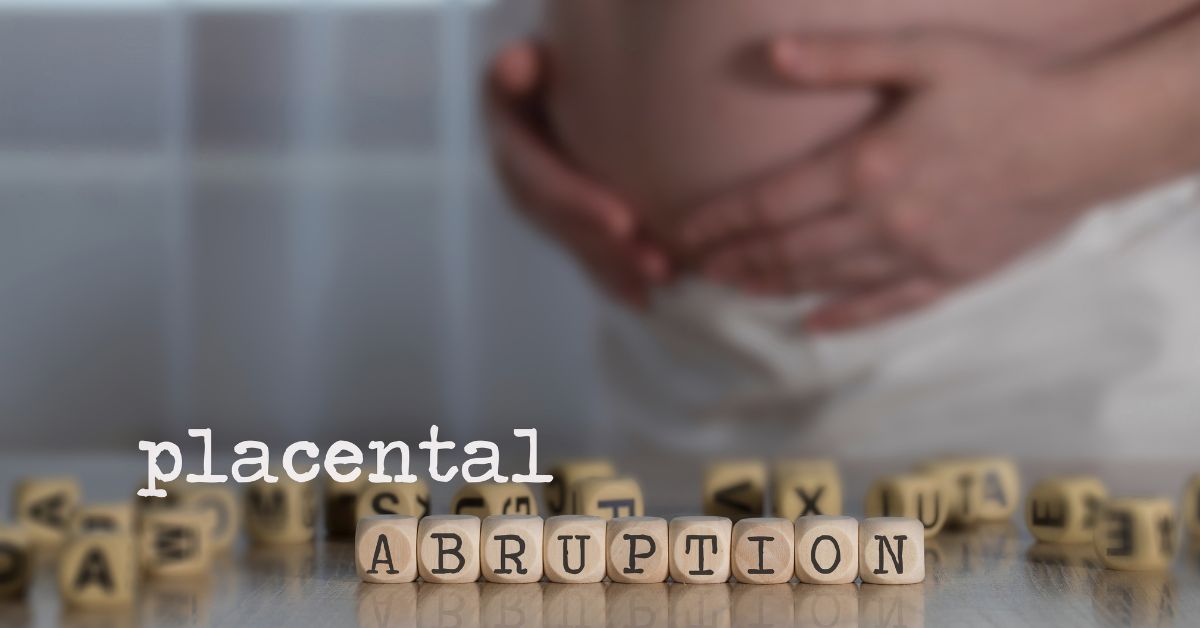Placental Abruption – Causes, Risk Factors, Symptoms and Treatment


Overview
The placenta is an organ developed during pregnancy that contains vital nutrients for the fetus and is attached to the uterine lining. The condition where the placenta separates from the uterus lining is known as placental abruption. It is a life-threatening condition to both mother and baby if left untreated. Hence, a proper diagnosis, treatment, and management plan are required to avoid any medical complications during pregnancy.
Request an appointment at Apollo Hospitals
About placental abruption
Placental abruption is a relatively rare condition and can occur suddenly during the final trimester of pregnancy. Normally, the placenta is separated from the uterus lining during the delivery process. This cuts off the baby’s supply of oxygen and nutrients and cause heavy bleeding in the mother. The heavy vaginal bleeding also can cause serious complications during pregnancy.
Placental abruption can occur as complete, partial, marginal, or central separation from the uterus/womb. Placental abruption is classified into four classes depending on the clinical findings and is mentioned below.
Class 0: Asymptomatic Placental abruption
This class of placental abruption has no harmful effect on the baby or mother. Also, there is no sign of pain or vaginal bleeding and can be detected on placental examination after the delivery.
Class 1: Mild Placental abruption
This class is also harmless to the baby and is associated with very little vaginal bleed along with a slight tenderness of the uterus.
Class 2: Moderate Placental abruption
This class causes fetal complications and moderate vaginal blood flow that requires immediate medical attention and delivery.
Class 3: Severe Placental abruption
This class of placental abruption is life-threatening to the fetus and leads to heavy vaginal bleeding that requires urgent delivery, often by a C-section.
Asymptomatic and mild cases are associated with a partial or marginal separation from the uterus, whereas moderate and severe cases are associated with complete or central separation from the uterus.
Causes and risk factors associated with placental abruption
The exact cause of placental abruption in pregnancy is unknown. The factors responsible for placental abruptions can be classified into 3 types as follows:
Lifestyle and health history
- Smoking
- Use of habit-forming drugs like cocaine
- Age of mother above 35 years
- Hypertension
- An episode of placental abruption in a prior pregnancy
Current pregnancy
- Multiple pregnancies
- Polyhydramnios (a condition with excess amniotic fluid in the placenta)
- Sudden loss of amniotic fluid from the placenta
- Short umbilical cord
Unexpected trauma
- Accident from vehicles
- Physical fall
- Domestic violence
Symptoms of placental abruption
There is a sudden onset of symptoms seen in placental abruption. Some of the symptoms are mentioned below.
- Vaginal bleeding though in certain cases it may not be evident
- Intense abdominal and back pain
- Uterus tenderness
- Uterine contractions, coming often one right after another
Complications
For a mother:
- Blood clotting issues
- Shock due to blood loss
- Failure of organs
- Need for hysterectomy, rarely
For the baby, placental abruption can cause:
- Stillbirth
- Not getting enough oxygen
- Restricted growth from not getting enough nutrients
- Premature birth
When to see a doctor?
If you experience any of the above symptoms of placenta abruption, immediately seek medical attention.
Request an appointment at Apollo Hospitals
Call 1860-500-1066 to book an appointment
What are the available treatment options for placental abruption?
Placental abruption treatment depends on its type and gestation period. It requires immediate hospitalization of the patient. If the patient is suffering from mild placental abruption and baby’s heart rate is normal, it is too early for your baby to be born and you may be hospitalized for close medical monitoring and rest . You may be given medicines to help the baby’s lungs mature and to protect your baby’s brain, in case early delivery becomes necessary.
In case of severe placental abruption, the patient is treated with intravenous fluids, oxygen supply, and continuous monitoring of the mother and fetus. Depending on the duration of pregnancy and uterus bleeding, the doctor may induce labor or plan a C-section on an urgent basis.
Conclusion
Placental abruption is a rare but life-threatening condition for both the mother and fetus.
It accounts for 5-8% of the maternal death rates and 1-40% of fetal death rates. Mild placental abruption with partial separation from the uterus is associated with less maternal and fetal death rates as compared to severe placental abruption with complete separation from the uterus. The recurrence rate in subsequent pregnancies is reported to be 4-12%.
Frequently Asked Questions (FAQs)
Can lifting of heavy things in pregnancy lead to placental abruption?
Yes, reports have shown that frequent lifting of heavy things during pregnancy can cause placental abruption.
How can we prevent placental abruption?
Placental abruption can be prevented by taking safety measures such as wearing seat belts while traveling, avoiding smoking and the use of narcotic drugs, and frequent monitoring of blood pressure.
Are placenta previa and abruption the same?
No, placenta previa is a partial or complete covering of the opening of the uterus cervix by the placenta, whereas placental abruption is the separation of the placenta from the uterus wall.
© Copyright 2024. Apollo Hospitals Group. All Rights Reserved.
 +91 8069991061
Book Health Check-up
Book Health Check-up
Book Appointment
Book Appointment
+91 8069991061
Book Health Check-up
Book Health Check-up
Book Appointment
Book Appointment







